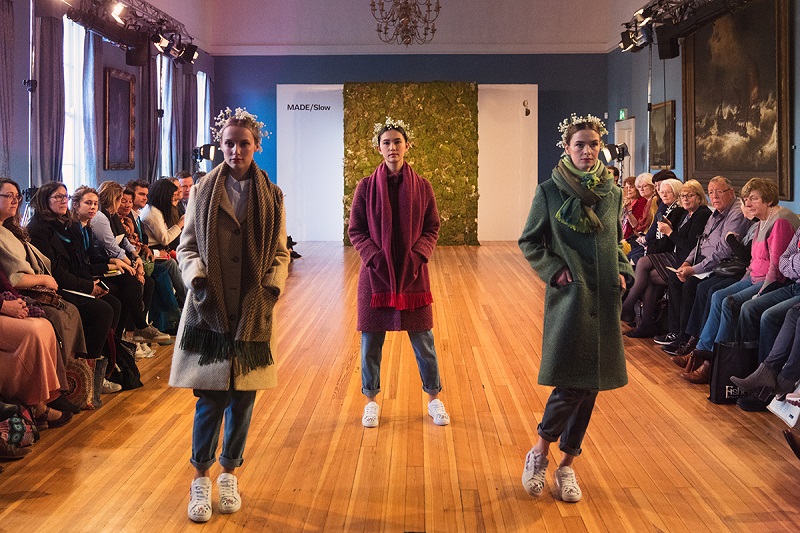EarthTalk®
From the Editors of E – The Environmental Magazine

Ireland’s Avoca Handweavers have been making fashionable clothing items with the care and attention to detail nowadays associated with “slow fashion” since 1723. Credit: William Murphy, FlickrCC.
Dear EarthTalk: What is “slow fashion?” Does it relate to sustainability? – K. Lam, Taos, NM
In the U.S., millions of shoppers pack clothing stores, excited to key into the newest trends while paying low prices. On the other side of the world, low-wage workers—many of them young girls— are crushed under the hammer of “fast fashion” (the mass production of cheap, poor quality, disposable clothing), laboring without safety protections or adequate rights. Fast fashion’s impacts on both the environment and human rights are evident, and slow fashion may just be the only solution to a greener future.
First off, fast fashion revolves around the concept of speeding up production time while minimizing costs, which prompts producers to use the cheapest textiles and toxic textile dyes. Perhaps one of the most popular textiles, polyester is derived from fossil fuels and sheds microfibers that can end up in oceans. Another common material is cotton, which requires extensive quantities of water, pesticides and labor to produce. More important, fast fashion is constantly changing clothing trends—most consumers fall into this ploy and discard garments once they are out of trend. As a result, according to the U.S. Environmental Protection Agency, in 2018 11.3 million tons of textiles ended up in landfills and 3.2 million tons were incinerated—releasing high amounts of greenhouse gases.
While fast fashion exploits labor and the environment to make more and sell more, slow fashion focuses on quality over quantity and respects workers’ rights. A foundational principle of slow fashion is simply to buy less in the first place. Social media and other influencers have lured shoppers with the hottest brands and pressed on the idea of wearing your clothing only once. Slow fashion encourages consumers to dismantle that mindset and learn to value every piece of clothing you own or buy.
Since many people shop for the experience and enjoy the feeling of buying clothes more than the clothing article itself, slow fashion emphasizes choosing high-quality pieces made with sustainable materials. Although more expensive doesn’t necessarily mean more sustainable, higher cost investments do promote that shift in mindset for you to better cherish a garment and wear it more often.
For those who are more financially conservative, second-hand shopping is a great alternative to more expensive sustainable brands. Thrifting is an extremely cheap option for you to shop based on individual desires rather than trends while also gaining that sense of fulfillment from shopping. Other second-hand options like vintage or consignment stores allow shoppers to purchase unique, high-quality items at a fraction of the normal cost.
Slow-fashion also encourages making garments last longer, such as washing and drying clothing at the proper temperatures and buying sewing kits to fix small holes or replace buttons.
While fast-fashion brands have been doing well lately, slow-fashion is also gaining ground. For those who want to practice sustainable shopping, it’s simple to take that step into your environmental journey—join a slow-fashion support group, start your own personal challenge to spend less, and spread awareness within your community and beyond.
CONTACTS:
“How to make more ethical & conscious fashion choices,” sloactive.com/slow-fashion-guide
“What’s Wrong with Fast Fashion?” pebblemag.com/magazine/living/whats-wrong-with-fast-fashion
EarthTalk® is produced by Roddy Scheer & Doug Moss for the 501(c)3 nonprofit EarthTalk.
See more at https://emagazine.com
To donate, visit https//earthtalk.org
Send questions to: question@earthtalk.org
